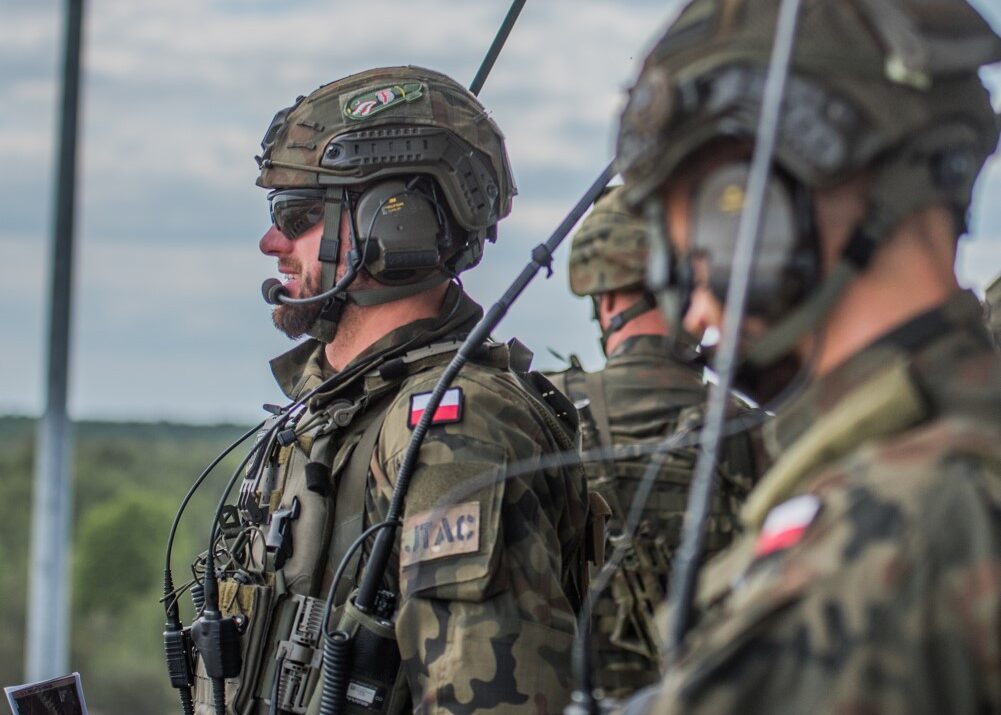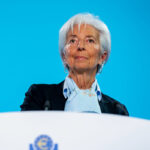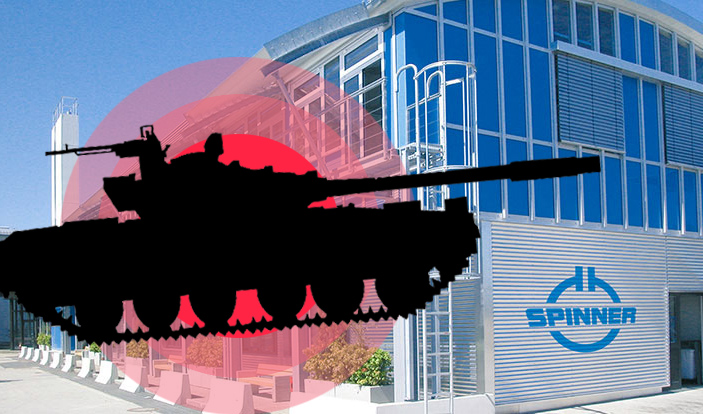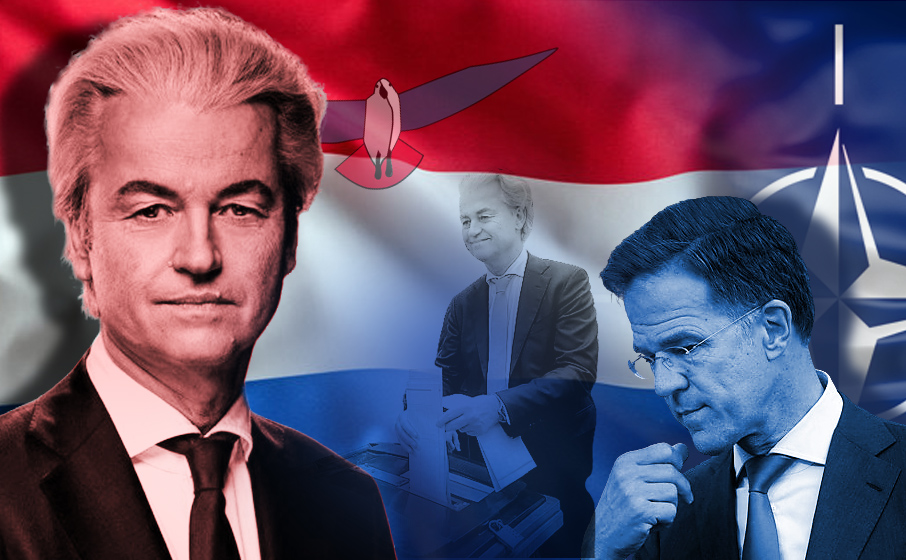Small Lithuania invites German Rheinmetall to produce ammunition, Italian troops train on firing ranges, and Estonia shows record defence spending relative to its GDP. Europe has begun to take the threat from Russia seriously. Global defence spending has reached record levels, surpassing that of the final year of the Cold War. Nearly all European governments understand that Ukraine’s efforts alone are insufficient to effectively counter Russian aggression.
Lithuania is setting up its own shell manufacturing, Italian troops are diligently training in artillery shooting on ranges near tranquil beaches, and Polish brigades are advertising for recruiting on local trains—this is the new European reality triggered by Russia’s invasion of Ukraine. Who is ready to spend money to deter the Russian threat, and how? This is a crucial question after more than thirty years of ignoring this danger.
On 3 June, Lithuania’s Minister of Economy and Innovation, Aušrinė Armonaitė, signed an agreement to build an artillery shell factory with the German defence company Rheinmetall. This plant is set to start operations next year and aims to produce several tens of thousands of rounds per year by December 2025. Rheinmetall’s investment in shell production in Lithuania is expected to amount to €180 million.
According to the Lithuanian minister, the agreement with Rheinmetall is an “extremely important step to meet immediate defence and security needs.” “This will help us have uninterrupted access to Western weapons and ammunition,” she noted. But is this enough? Of course not. Several tens of thousands of shells are roughly three weeks’ worth of supplies for the Ukrainian army, or perhaps even less. Russian forces use this amount of ammunition in about a week.
However, a long journey begins with the first steps. Therefore, European countries are starting to increase the activity of their armed forces. Military exercises, procurement of weapons and ammunition, and recruitment of new service members—all these require increased defence spending. These expenditures began to rise sharply from the 2023 budget year.
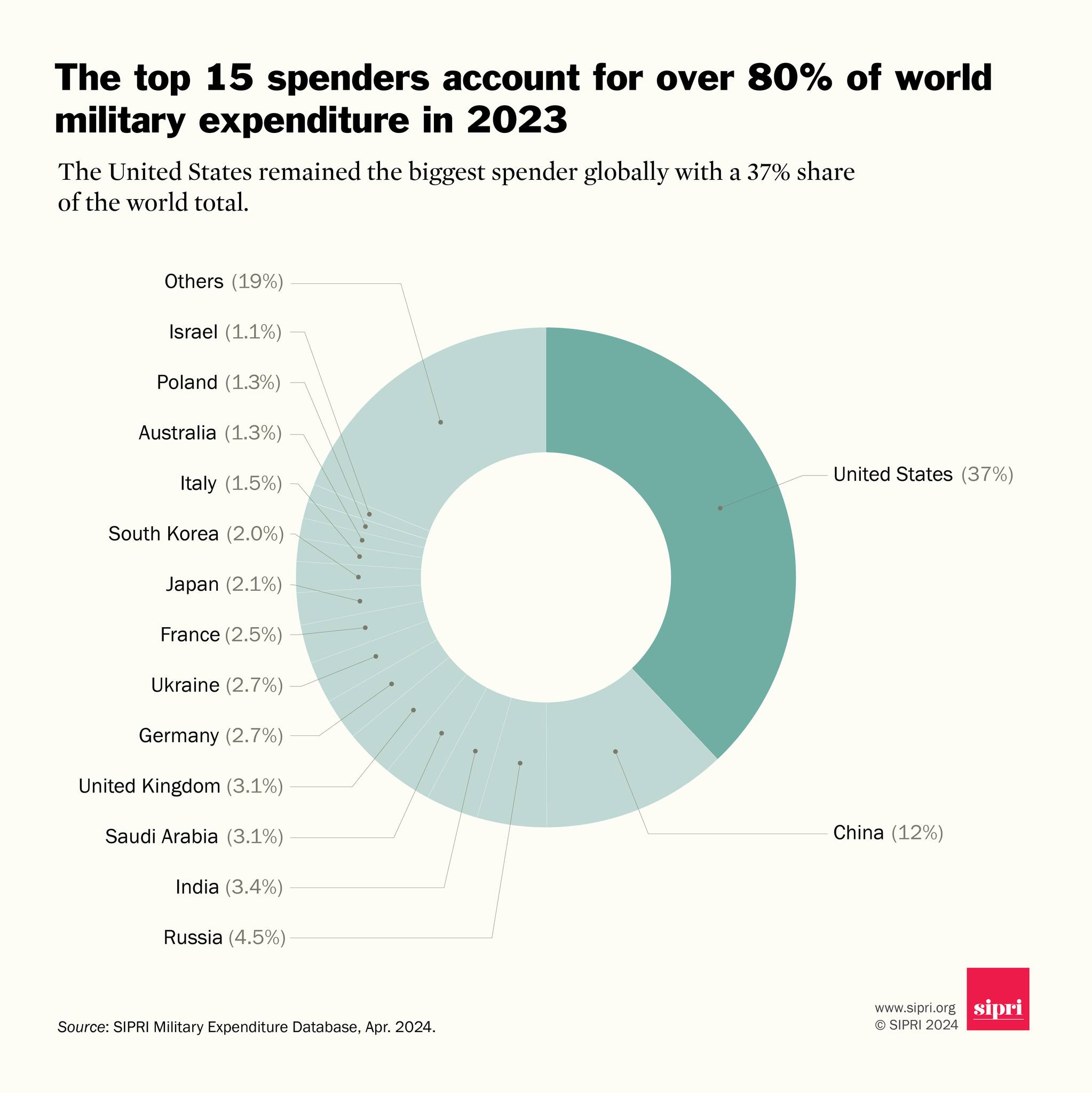
Photo: Who spends the most on defence and offence globally. Source: SIPRI
Sharp Rise in Defence Spending Triggered by Russian Aggression
According to data from the Stockholm International Peace Research Institute (SIPRI), there has been a rapid increase in defence spending spurred by Russia’s full-scale invasion of Ukraine.
It is important to note that the war initiated by Russia in Ukraine has led to heightened geopolitical tensions. Consequently, global defence spending rose by 6.8% in real terms (adjusted for inflation). By the end of 2023, these expenditures reached $2.443 trillion, marking the highest level of defence spending, surpassing even the peak levels during the Cold War.
SIPRI highlights that the increase in defence spending is a global phenomenon. For the first time since 2009, military expenditures grew in 2023 across all five geographic regions. This is entirely understandable. For example, the US focus on supporting its European allies seems to have given Beijing the false impression that it had a window of opportunity to annex Taiwan, escalating tensions in East Asia. As a result, in 2023, total military spending amounted to 2.3% of the world’s gross domestic product (GDP).
The five countries with the highest military expenditures accounted for 61% of global military spending in 2023: the USA (37%), China (12%), Russia (4.5%), India (3.4%), and Saudi Arabia (3.1%). The UK closely follows, practically tying with Saudi Arabia at 3.1%. The two major global power centres – the USA ($916 billion) and China ($296 billion) – both increased their military spending in 2023.
Russia, the instigator of the global geopolitical crisis, increased its military spending by 24% to $109 billion in 2023. The ratio of Russia’s military budget to its GDP in 2023 was 5.9%. However, it should not be assumed that Russia had not been increasing its military expenditure prior to 2023: from 2014 to 2022, its military budget grew by approximately 33%.
Ukraine’s steadfast defence against Russian aggression has compelled it to dramatically increase its defence spending. As a result, by the end of 2023, Ukraine ranked eighth in terms of absolute defence expenditures. Compared to the first year of the war, Ukraine increased its defence spending by 51% to $64.8 billion, which constitutes 37% of the country’s GDP.
Of course, Ukraine cannot defend itself against a significantly larger country without external support in terms of weapons, ammunition, technical assistance, and financing. According to SIPRI estimates, Ukraine received at least $35 billion in military aid during 2023, including $25.4 billion from the USA. Combined, this assistance and Ukraine’s own military spending are equivalent to approximately 91% of Russia’s military expenditures, whereas Ukraine’s own military spending in 2023 was only about 59% of Russia’s military expenditures.
Poland Leads the Way
The growing threats have led to NATO member states’ defence spending in 2023 reaching $1.341 trillion, accounting for 55% of global military expenditures. For many years, most European governments did not meet the NATO target of 2% of GDP on defence spending. However, in 2023, the number of NATO members achieving this target increased by four to eleven out of 31 members.
Poland saw the largest proportional increase in defence spending among European countries from 2022 to 2023, spending 3.8% of its GDP on defence in 2023. This placed Poland 14th globally in terms of absolute defence budget size, accounting for 1.3% of global defence expenditures. However, Warsaw’s goal of reaching 4% of GDP in defence spending is not yet achieved, although it is close.
Polish President Andrzej Duda has repeatedly called on NATO members to increase their defence spending, citing fears that Russian President Vladimir Putin is preparing to attack NATO in the coming years. Yet, not all heed these calls. For example, unlike other European NATO countries, Greece, Italy, and Romania did not increase their military spending in 2023.
In absolute terms of defence expenditure, Poland is outpaced by Western European countries such as the United Kingdom (3.1% of global defence spending), Germany (2.7%), France (2.5%), and Italy (1.5%). However, it is essential to understand that each of these four countries has a GDP several times larger than Poland’s. Specifically, France’s defence spending is 1.9% of its GDP, while Italy’s is only 1.5%.
Notably, the two largest European defence spenders have decided to increase their budgets further. In 2023, the United Kingdom, already spending 2.3% of its GDP on defence, announced plans to raise this to 2.5%, although Chancellor Jeremy Hunt acknowledged that achieving this would not be easy. This is significantly above NATO’s target.
Germany, despite increasing its military spending by 48% in 2023 compared to 2014, has not yet reached the 2% GDP target, currently at 1.7%. However, in 2022, the German government established an off-budget fund to achieve this goal.
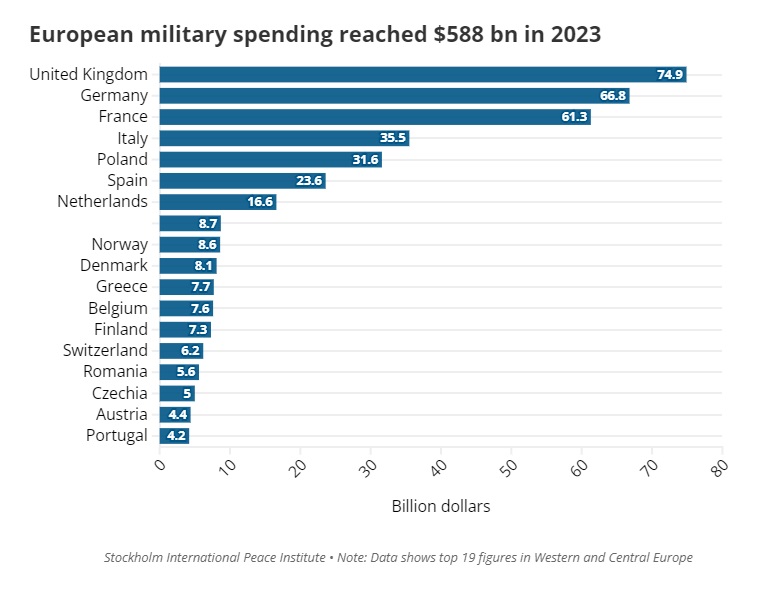
Photo: European countries’ defence spending. Source: SIPRI
Neighbours Call for Increased Defence Spending
On 31 May, during the Shangri-La Dialogue, a high-level security meeting in Singapore, Russia’s neighbouring countries called for more active weapons production and increased military planning to protect against Russian aggression.
“As a new member of NATO… it is extremely important for us to make progress in terms of military planning, to take a deeper look at Finnish defence as part of NATO’s defence,” said Finland’s Deputy Defence Minister Esa Pulkkinen during the summit in Singapore. It is expected that at the annual summit of NATO’s 32 member countries in Washington, the main agenda will be assistance to Ukraine and the integration of two new NATO members, Sweden and Finland.
“It has become clear that no small state can cope alone with a brutal attack by a much larger enemy,” added Pulkkinen. Finland’s defence spending already accounts for 2.5% of its GDP.
Estonia, a NATO member since 2004, holds a similar stance, demanding that Alliance members increase their defence spending. “Heading to Washington, we are advocating for the ACDC initiative,” said Estonia’s Defence Minister Hanno Pevkur. This Baltic countries’ proposal calls for raising NATO members’ defence spending from 2% of GDP to 2.5%. Estonia has already met this target, with defence spending at 2.9% of GDP in 2023. Lithuania’s defence spending is 2.8% of GDP, while Latvia has almost reached the new goal at 2.4% of GDP.
Source: The Gaze


